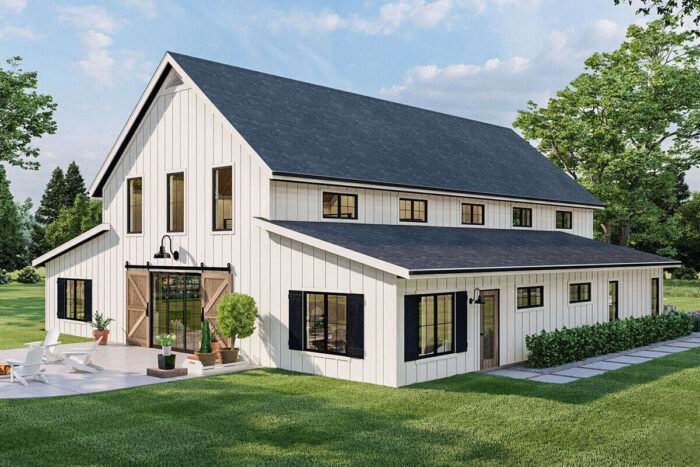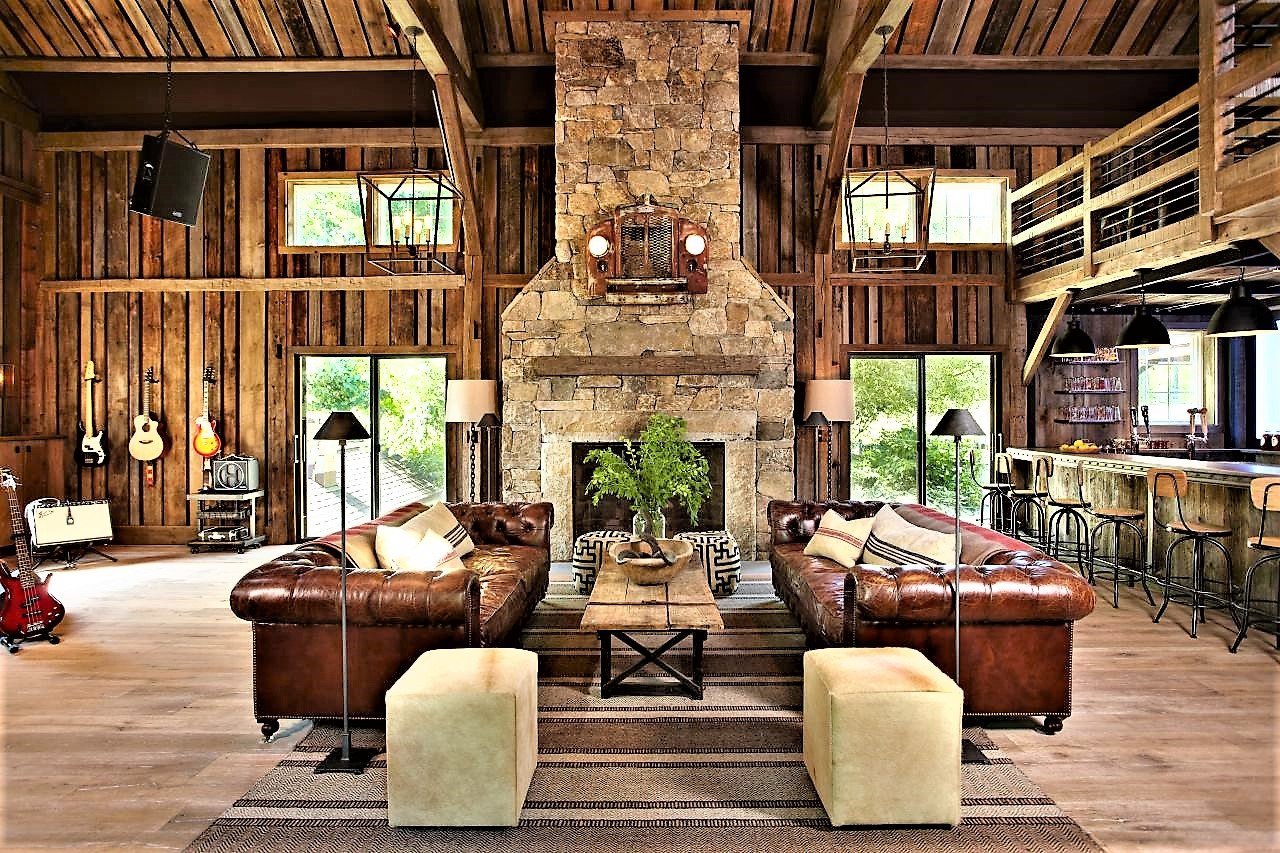
After the past few years of climbing home prices—and a pandemic that made even spacious homes feel cramped—you’d be forgiven for fantasizing about moving your brood into a big country house.
One way to make it happen? A barndominium is what you get when you convert an old barn into a luxurious condominium-style abode. (You can also build your own from scratch.)
We’ve been just as curious as you are about these nontraditional country homes. So we talked to folks who have lived in (or sold) these unique homes. Here are the main pros and cons for all would-be barndominium dwellers.
Pro No. 1: Rural lifestyle
All the barndominium owners we spoke to echoed a similar line of thought: Living in one is a great option if you’re looking for a simple, rural lifestyle for your family.
“It’s not uncommon to meet fellow barndo owners or builders who utilize rainwater collection systems, or are always up for talking gardening,” says real estate agent and barndominium owner Lauren Byington, of Warren + Lauren. Many even have backup systems in place with generators, propane tanks, and alternative energy—like solar.
But the rural lifestyle goes beyond sustainable living. It’s also a great choice for those with lots of outdoor interests and toys.
“For most folks, they choose to live in a barndominium because it’s usually in a rural area and allows [them] to have space for their hobbies and toys—such as woodworking, RVs, and ATVs,” says Don Howe of Barndominium Life.
Pro No. 2: Less exterior home maintenance
Barndominiums tend to require less maintenance, because they’re built with weather-hardy materials (notably steel siding and a metal roof).
“A metal barndominium is one of the lowest maintenance types of homes you can imagine,” says Howe. “They don’t require the upkeep of a traditional home and are much more durable than most stick-built homes.”
The metal used is often coated, so it’s likely you will not have to paint or maintain it—or at least not for a long time. And unlike wood, metal doesn’t rot or invite pests like termites.
Howe tells a story about a 30-foot-tall tree falling directly onto a barndominium.
“And it bounced right off—that’s not happening with a traditional home,” says Howe.
Pro No. 3: Unlimited interior customization
If you love high ceilings and are looking for the flexibility to customize your home’s interior, then you might just like the sprawling floor plan of a barndominium.
“Your average barndominium is best characterized by a lot of wide-open spaces under a clear span roof, giving you more creative freedom to do whatever you want with the interior,” says real estate agent Zackary Smigel, who has sold his fair share of barndominiums. “I think this is one of the best parts of living in one, as there’s no limit to how much you can customize the interior.”
Con No. 1: Lacks storage (and privacy)
The flip side of having one big and beautiful room taking up your whole house is this: You might not have a whole lot of storage space or privacy.
“One potential con of living in a barndominium includes the lack of stand-alone storage for your belongings,” confirms woodworker and former barndominium dweller Barry Gray, of The Tools Square. “Many people also feel that living in a barndominium decreases personal privacy, since every move made inside is likely being watched by one or more other residents.”
Con No. 2: Noisy as heck
Ah yes, the sound of rain on a metal roof; but also, all the other outdoor sounds (your neighbor’s construction projects, your kid’s ATV) will also likely creep through the walls and ceiling of your beloved home.
“Due to the hybrid nature of these dwellings, it’s possible for them to experience levels of noise that exceed the expectations associated with traditional residential spaces,” says Gray.
And the sounds aren’t just coming from outside.
“The sources of this increased noise can include ventilation systems and other elements of the building’s structure that are not present in typical homes,” Gray adds.
Con No. 3: More expensive than you’d think
Because barndominiums tend to be outfitted with lots of metal, they cost quite a bit more than your standard wood construction—especially if you plan to build one from the ground up.
“Some even think a barndo is a cheaper entry point into building a house,” says Byington. “I have not found that to be true. If you use all-metal or mostly metal construction, the steel and metal is a serious investment—more than wood and traditional building materials.”
Article written by Larissa Runkle for realtor.com, image by American Home Plans, header image by Barndominium Life
Posted by The Cobb Group on

Leave A Comment